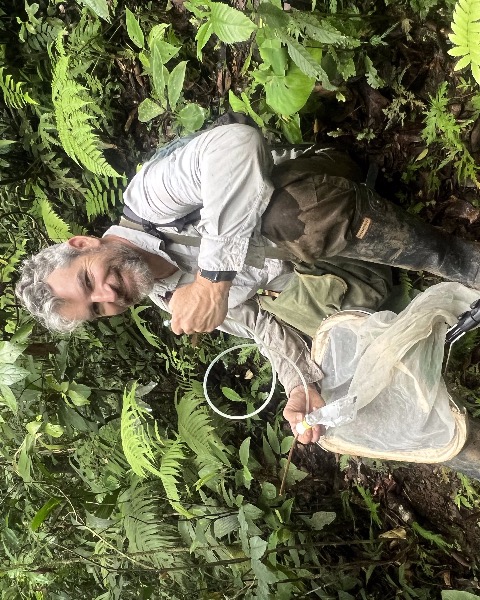Poster
Plant-Insect Ecosystems
P-IE: Parasitoids
D3473: Test of a natural enemy hypothesis on plant provenance: parasitoids in native and exotic ornamental landscapes

Matthew H. Greenstone
Research Entomologist, Retired
USDA - ARS
Altoona, Pennsylvania- RO
Richard Olsen
USDA - ARS
Washington, District of Columbia - RK
Robert R. Kula
Research Entomologist
USDA - ARS
Washington, District of Columbia 
Matthew Buffington
Research Entomologist
USDA
Washington, District of Columbia- MG
Michael Gates
USDA
Washington, District of Columbia - MP
Mark Payton
Rocky Vista University
Parker, Colorado - rc
robert colwell
University of Colorado
Boulder, Colorado
Presenting Author(s)
Co-Author(s)
One of the ecosystem services provided by ornamental urban landscapes is biological control of plant pests. Because these landscapes tend to be mosaics of native and exotic plants, it would be useful to know whether native or exotic landscapes support more abundant and/or diverse natural enemy populations. In eastern North America, many commonly-grown exotic woody plants were entirely absent from the continent prior to the arrival of Europeans. We test the hypothesis that, lacking recent co-evolutionary history with exotic plants, plant structural features and native natural enemies will be less effective at using resources - e.g., architectural features and nutritional supplements - provided by exotic plants, and hence be less numerous and diverse in landscapes dominated by them. In a residential-scale RCBD experiment comprising 0.08 Ha plots planted to pairs of congeners representing 15 genera of woody plants, one from Eurasia and the other from North America, we found that hymenopterous parasitoids were statistically less abundant, and exhibited statistically lower family-level diversity, in the exotic plots.

.png)

